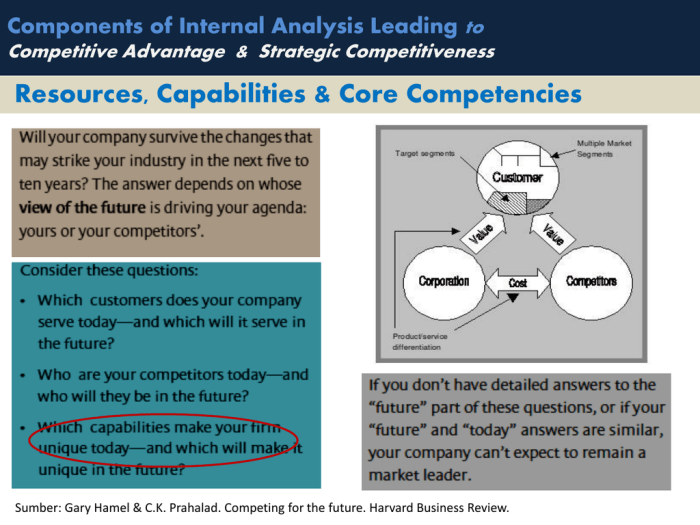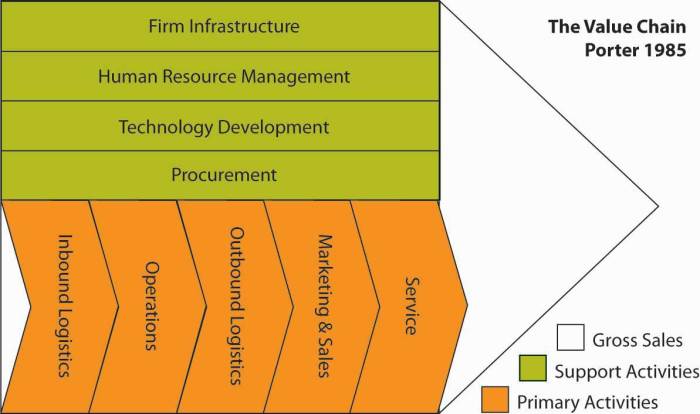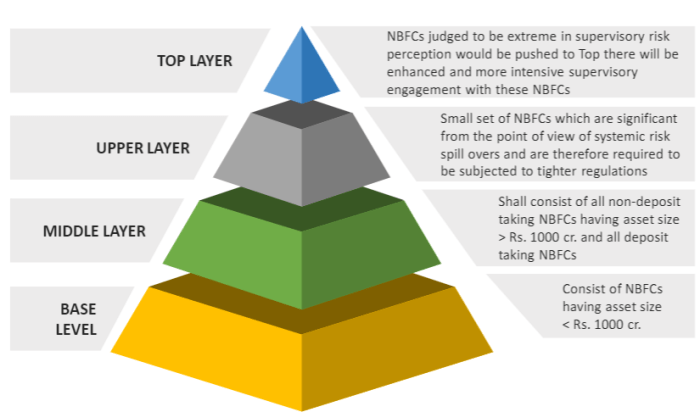Organizing firm-specific resources and capabilities as a bundle is a strategic approach that enables organizations to leverage their unique assets and competencies to gain a competitive advantage. By bundling resources and capabilities, firms can create a synergistic combination that enhances their overall performance and value creation.
This framework provides a comprehensive overview of the concept of resource and capability bundling, its benefits, and best practices for implementation. It also explores the role of leadership in shaping the firm’s resource and capability bundle and the challenges and opportunities associated with this approach.
Framework for Organizing Firm-Specific Resources and Capabilities

Organizing firm-specific resources and capabilities as a bundle is a strategic approach that involves identifying, assessing, and leveraging the unique assets and abilities of a firm to create a competitive advantage. By bundling resources and capabilities, firms can enhance their overall value and effectiveness.
There are several benefits to organizing resources and capabilities as a bundle. First, it allows firms to create a more cohesive and integrated system. By aligning resources and capabilities, firms can reduce redundancy and improve coordination, leading to greater efficiency and effectiveness.
Second, bundling resources and capabilities can help firms to develop unique and distinctive competencies that are difficult for competitors to imitate. This can provide a sustainable competitive advantage and enhance the firm’s long-term performance.
There are numerous examples of firms that have successfully organized their resources and capabilities as a bundle. For instance, Apple is known for its ability to bundle hardware, software, and services to create a seamless and user-friendly experience for its customers.
Similarly, Amazon has successfully bundled its e-commerce platform with its cloud computing services to create a powerful ecosystem that has transformed the retail and technology industries.
Methods for Identifying and Assessing Firm-Specific Resources and Capabilities
Identifying and assessing firm-specific resources and capabilities is crucial for effective bundling. There are several methods that firms can use to do this:
- Value Chain Analysis:This method involves breaking down the firm’s activities into a series of primary and support activities and identifying the resources and capabilities that are critical to each activity.
- Resource-Based View:This approach focuses on identifying and assessing the firm’s internal resources and capabilities, including physical assets, human capital, and organizational culture.
- Capability Maturity Model:This method assesses the maturity of a firm’s capabilities across different levels, from basic to advanced, providing insights into the firm’s strengths and weaknesses.
Once resources and capabilities have been identified, it is important to assess their value and potential. This can be done using criteria such as:
- Rarity:The extent to which the resource or capability is possessed by other firms.
- Value:The contribution of the resource or capability to the firm’s performance.
- Imitability:The ease with which competitors can imitate the resource or capability.
- Sustainability:The ability of the resource or capability to provide a competitive advantage over time.
Role of Leadership in Organizing Firm-Specific Resources and Capabilities, Organizing firm-specific resources and capabilities as a bundle
Leadership plays a critical role in shaping the firm’s resource and capability bundle. Effective leaders create a culture that values and supports resource and capability bundling. They foster collaboration and innovation, and encourage employees to think strategically about how the firm’s resources and capabilities can be leveraged to create value.
Leaders can also use their influence to allocate resources and capabilities in a way that supports the firm’s strategic goals. They can make decisions about which resources and capabilities to invest in, and which to divest, based on their assessment of the firm’s competitive environment and its long-term objectives.
There are several examples of leaders who have successfully leveraged resources and capabilities to achieve strategic goals. For instance, Steve Jobs, the co-founder of Apple, was known for his ability to create a cohesive and integrated ecosystem of products and services.
Similarly, Jeff Bezos, the founder of Amazon, has successfully leveraged the firm’s e-commerce platform to create a dominant position in the retail industry.
Challenges and Opportunities in Organizing Firm-Specific Resources and Capabilities
Organizing firm-specific resources and capabilities as a bundle presents both challenges and opportunities for firms.
Challenges
- Complexity:Bundling resources and capabilities can be a complex and time-consuming process, especially for large and diverse firms.
- Coordination:Aligning different resources and capabilities requires effective coordination and communication across the organization.
- Path Dependence:Firms may become locked into a particular bundle of resources and capabilities, making it difficult to adapt to changing market conditions.
Opportunities
- Competitive Advantage:By bundling resources and capabilities effectively, firms can create a unique and distinctive competitive advantage.
- Innovation:Bundling resources and capabilities can foster innovation by encouraging employees to think creatively about new ways to leverage the firm’s assets.
- Growth:Bundling resources and capabilities can support growth by enabling firms to enter new markets or expand into new product lines.
Firms that can successfully overcome the challenges and seize the opportunities associated with resource and capability bundling are likely to achieve superior performance and long-term success.
FAQ Summary: Organizing Firm-specific Resources And Capabilities As A Bundle
What are the key benefits of organizing resources and capabilities as a bundle?
Bundling resources and capabilities can enhance synergy, reduce duplication, improve coordination, increase flexibility, and strengthen the firm’s competitive position.
How can firms identify and assess their firm-specific resources and capabilities?
Firms can use various methods, such as value chain analysis, resource-based view analysis, and SWOT analysis, to identify and assess their firm-specific resources and capabilities.
What role does leadership play in organizing firm-specific resources and capabilities?
Leadership plays a critical role in shaping the firm’s resource and capability bundle by setting strategic direction, fostering a culture that values resource and capability bundling, and allocating resources effectively.

